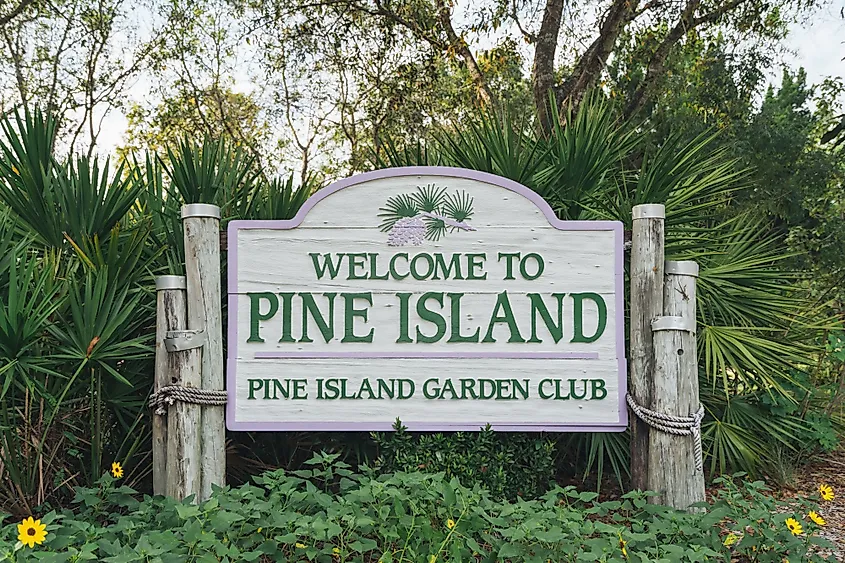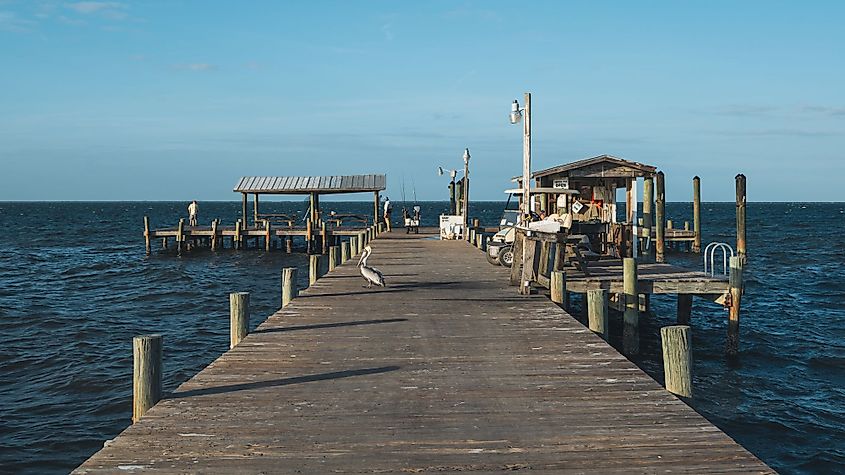Pine Island, FL north of Okeechobee Waterway
Cruisers Net lists only one marina, Four Winds Marina, suitable for drafts less then 3.5ft, at the northern tip of Pine Island. However, there are several good depth anchorages at the southern tip of the island just north of the Caloosahatchee River and the Okeechobee Waterway.
Pine Island, Florida
Geography Of Pine Island

Of the entire US, Pine Island is the 118th largest island and resides in Florida’s Lee County, which is west of Cape Coral. Pine Island is a part of a chain of islands that constitute the Matlacha Pass and separates it from the Florida Mainland. On the west side of Pine Island reside the Intracoastal Waterway, a waterway that runs from Massachusetts to Texas, passing around the Florida Peninsula. Of the nearby islands, Sanibel Island lies to the south, North Captiva Island to the west, and Captiva Island to the southwest.
Geology Of Pine Island
Similar to nearby Fort Myers, Pine Island is made up of deposits of coral rock. This variation of limestone encrusted with fossilized shells, animals, and even pine trees found in the northern tip from the excavation is common throughout southern Florida. Following millions of years of North America settling into place from the continental drift, that state’s land mass was twice as large. This saw extensive forests, dunes, and tributaries with the coast of the Gulf of Mexico starting another 100 miles west of Pine Island. Thus, came the ice age, which brought forth flooding as the glacier defrosted. Around 4500 BC, the shape of Florida formed into something similar to today. The former ice age also increased water levels and created the long and narrow islands seen off the gulf coast, including Pine Island. With churning ocean water, channels, shoals, and the unnamed sand beaches that are a familiar attraction of Pine Island formed. However, the mingling of freshwater and saltwater from the tributaries’ output created sedimentation. The fallen trees from the shore, among shells, animals, and other items fossilized in this sedimentation, created the limestone, better known as coral rock.
Brief History Of Pine Island
Long before the town of Pine Island existed, the Calusa Indians were the first known inhabitants of this island, around 800 AD. The first contact with outsiders did not occur until the mid-16th century when Spanish conquistadors landed. By the 19th century, there were no further documented occurrences of the Calusa Indians, and it is believed the tribe could have died off or dissolved into other tribes. Ongoing research is being conducted on Pine Island to further understand the Calusa Indians, with artifacts being unearthed as of today.
Ecology Of Pine Island








Be the first to comment!